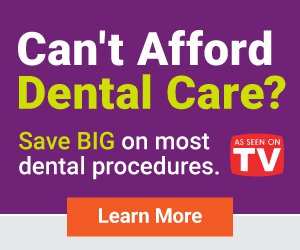How Do I Brush My Teeth with Braces?
Keeping up good oral health requires more maintenance when you have braces. But it doesn’t have to be hard—all you have to do is follow these steps.

photo by Monica y Garza via Flickr.
Braces are great for enhancing your smile—that is, if you know how you take care of them. Once you have braces on, keeping your teeth clean is no longer as simple as brushing twice a day. On top of cleaning your teeth, you now have to clean between brackets and wires that collect food and plaque. In order to get the healthiest and whitest smile once your braces come off, it’s important to keep a good dental hygiene regimen. Take a look at some of the best ways to brush and maintain healthy teeth and braces.
How Do I Brush my Teeth with Braces?
1. Choose the Right Toothbrush
You’ll want to choose a brush that can clean between and around brackets. Some health professionals actually recommend using two kinds of brushes, a soft brush and proxabrush. With the soft brush first, brush each tooth from the bottom up and then the top down on each tooth with a bracket. Then, use the proxabrush, or “Christmas tree” brush, using it in several strokes in each direction cleaning the space between the two braces. This type of brush is designed specifically to clean between brackets and braces.
2. Floss Everywhere
Flossing can seem like an annoying task, even without wires in your mouth. But it’s crucial that you floss at least once per day if you have braces. Be sure to floss thoroughly, all over your mouth to prevent buildup of plaque and objects between teeth. Some types of floss you can consider are normal floss, a reusable floss threader, Plackers, or a waterpick.
3. Rinse Your teeth
Using mouthwash regularly can help to clear out food and plaque between teeth and braces. Plus, rinsing helps to reduce gum and cheek inflammation that come from wearing braces. Use mouthwash that specifically protects against gingivitis.
4. Clean Removable Appliance
As a part of your regular brushing and flossing schedule, make sure you clean your removable appliance. You can put a denture-cleaning tablet, like Polident or Efferdent, in a cup of tap water and soak your appliance in this solution everyday, or 3 times a week at least. That way, your appliance won’t accumulate plaque or bacteria.
How often Should I Clean my Braces?
Brushing on a daily basis is important, but many people forget that flossing should be a regular habit as well. The best time to floss is right before bed, cleaning between all your teeth. You should always brush after flossing.
If you can, you should brush your teeth after each time you eat. Once you have braces, it is a good habit to keep a toothbrush on hand so you can clean your teeth. If that’s not possible, you should at least swish and rinse your mouth with water after meals so that food doesn’t stay caught in your braces and teeth.
You should also keep up with regular dental cleanings at least every 6 months. On top of keeping your teeth clean, they will also check to ensure that your braces and wires are in place and working as they should be.
Follow Instructions (And Watch Out for Plaque)
The instructions above can used as a reference for properly cleaning and maintaining your teeth while you wear braces. However, it’s still important that you follow the oral hygiene regimen recommended to you by your orthodontist. They can give you detailed recommendations on what products to use and exactly how to use them so that your mouth will remain healthy throughout the dental treatment.
What makes well-cared-for braces so crucial is the fact that the braces, bands, and wires catch food particles that can cause bacterial plaque to build up on your teeth. Plaque is a deposit of bacteria that constantly forms on teeth as a sticky, colorless film. Bacteria that live in plaque produce acids when they come in contact with sugar and starches from food. The damaging acids break down the layers of a tooth, starting with the enamel. After time, teeth are left with marks, stains, and cavities. The best way to prevent damage to your teeth is to keep good habits of brushing and rinsing 3 or 4 times a day, especially after meals.
What Foods Can I Eat with braces?
Although it’s not fun to avoid certain foods because of your braces, damaging your braces due to sticky or crunchy foods is more unpleasant. To avoid getting food stuck in—or worse yet, breaking— wires or brackets, it’s best that you avoid these kinds of foods:
-
Caramel
-
Gooey chocolate bars
-
Chunky/sticky peanut butter
-
Hard candies
-
Nuts
-
Chewy candy (like taffy and gummy bears)
-
Popcorn
-
Gum
While it’s best to avoid the foods above when you can, there’s also some foods that you can eat, as long you’re being careful:
-
Chips (eat one at a time, carefully)
-
Crunchy veggies or fruits like apples and carrots (cut them into small pieces)
-
Chewy bread, like bagels (tear them into small pieces.
-
Corn on the cob (cut kernels off the cob)
-
Sugary drinks (limit intake, as they can lead to tooth decay when consumed too much.)
Risks of Poor Oral Hygiene
Braces are used to give you a straighter, healthier smile and mouth. But without the proper oral hygiene, your teeth can become damaged and discolored. But whether or not you have braces, teeth can have problems when they aren’t regularly brushed, flossed, and maintained as they should be. Unfortunately the risks are even higher for those with braces. Some of the major issues associated with poor hygiene and braces are gingivitis, periodontics, decalcifications.
-
Gingivitis
Signs of gingivitis (gum disease) are swollen, puffy, and/or bleeding gums. This issue is caused by plaque that builds up around the gum line. It is the first stage in periodontal disease. To help prevent it, you should floss often and be sure to lightly brush around the gum line. -
Periodontics
If gingivitis is not treated, it can lead to periodontitis. Signs of this issue are gum infection and inflammation that spreads to the bone and ligaments that support the tooth. -
Decalcification
Decalcifications are permanent stains that can form around braces that are often called “white marks.” These spots and marks can permanently stain teeth, so it’s best to take preventive measure to keep them from forming in the first place. Brushing regularly and thoroughly will help prevent decalcification.
Other tips:
Watch what you chew.
It’s not enough to avoid eating certain foods to prevent damage to your braces—you need to also watch your chewing habits. Biting on pencils, fingernails, and ice can be harmful for teeth and braces.
Replace your toothbrush often.
Over time, bristles get worn down and don’t clean your teeth as well. With braces your toothbrush will wear out even faster. Replacing the tooth brush or the brush head every 3 months will help keep your teeth in pristine condition.
Never miss an appointment.
Seeing your orthodontist and hygienist on your scheduled appointments and oral exams is crucial for your dental health. They make sure that your teeth are progressing well with your braces so that you can get them off as soon as possible. They also inform you on the best way to care for your braces and teeth.
Think you need braces? Find out how they can be affordable for you and your family!





